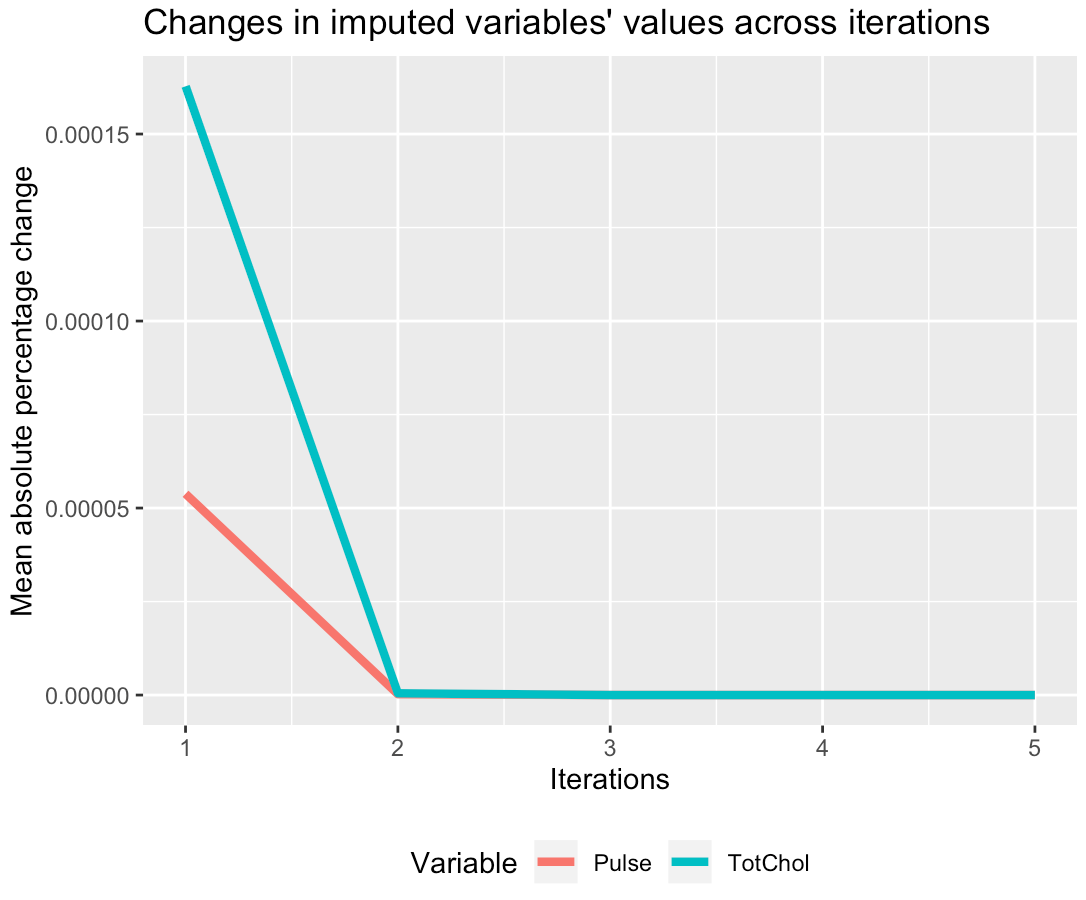Model-based imputation approach
Handling Missing Data with Imputations in R

Michal Oleszak
Machine Learning Engineer
Model-based imputation
- Impute each variable with a different statistical model.
- Ability to account for relations in the data that we know of.
Model-based imputation procedure
- Loop over variables.
- For each variable, create a model that explains it.
- Use the model to predict missing values.
- Iterate through variables imputing the locations where data were originally missing.
Model-based imputation step by step

Model-based imputation step by step

- Predict missing values in A.
Model-based imputation step by step

- Predict missing values in A.
- Treat data imputed in A as observed and predict missing values in C.
Model-based imputation step by step

- Predict missing values in A.
- Treat data imputed in A as observed and predict missing values in C.
- Treat data imputed in C as observed and predict A again where it was originally missing.
- Continue until convergence.
How to choose the model
The model for each variable depends on the type of this variable:
- Continuous variables - linear regression
- Binary variables - logistic regression
- Categorical variables - multinomial logistic regression
- Count variables - Poisson regression
Single linear regression imputation
Impute Height and Weight in nhanes with a linear model:
library(simputation)
nhanes_imp <- impute_lm(nhanes, Height + Weight ~ .)
Check if they were indeed imputed:
nhanes_imp %>%
is.na() %>%
colSums()
Age Gender Weight Height Diabetes TotChol Pulse PhysActive
0 0 32 30 1 85 32 26
Linear regression imputation in practice
Initialize missing values with hotdeck and save missing locations:
nhanes_imp <- hotdeck(nhanes)
missing_height <- nhanes_imp$Height_imp
missing_weight <- nhanes_imp$Weight_imp
Iterate over Height and Weight 5 times, imputing them at originally missing locations:
for (i in 1:5) {
nhanes_imp$Height[missing_height] <- NA
nhanes_imp <- impute_lm(nhanes_imp, Height ~ Age + Gender + Weight)
nhanes_imp$Weight[missing_weight] <- NA
nhanes_imp <- impute_lm(nhanes_imp, Weight ~ Age + Gender + Height)
}
Detecting convergence
for (i in 1:5) {
nhanes_imp$Height[missing_height] <- NA
nhanes_imp <- impute_lm(nhanes, Height ~ Age + Gender + Weight)
nhanes_imp$Weight[missing_weight] <- NA
nhanes_imp <- impute_lm(nhanes, Weight ~ Age + Gender + Height)
}
Detecting convergence
diff_height <- c()
diff_weight <- c()
for (i in 1:5) {
nhanes_imp$Height[missing_height] <- NA
nhanes_imp <- impute_lm(nhanes, Height ~ Age + Gender + Weight)
nhanes_imp$Weight[missing_weight] <- NA
nhanes_imp <- impute_lm(nhanes, Weight ~ Age + Gender + Height)
}
Detecting convergence
diff_height <- c()
diff_weight <- c()
for (i in 1:5) {
prev_iter <- nhanes_imp
nhanes_imp$Height[missing_height] <- NA
nhanes_imp <- impute_lm(nhanes, Height ~ Age + Gender + Weight)
nhanes_imp$Weight[missing_weight] <- NA
nhanes_imp <- impute_lm(nhanes, Weight ~ Age + Gender + Height)
}
Detecting convergence
diff_height <- c()
diff_weight <- c()
for (i in 1:5) {
prev_iter <- nhanes_imp
nhanes_imp$Height[missing_height] <- NA
nhanes_imp <- impute_lm(nhanes, Height ~ Age + Gender + Weight)
nhanes_imp$Weight[missing_weight] <- NA
nhanes_imp <- impute_lm(nhanes, Weight ~ Age + Gender + Height)
diff_height <- c(diff_height, mapc(prev_iter$Height, nhanes_imp$Height))
diff_weight <- c(diff_weight, mapc(prev_iter$Weight, nhanes_imp$Weight))
}
Detecting convergence

Let's practice linear regression imputation!
Handling Missing Data with Imputations in R

